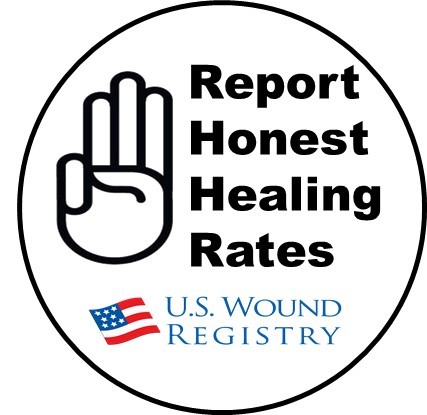I got my 2019 MIPS (Merit Based Incentive Payment System) Final Score Report. I reported wound care relevant measures in 2019 and got high quality scores.
Check out my Diabetic foot ulcer (DFU) healing rate. It was 33.14% – and yet I still scored 8.39/10 with that low healing rate. In other words, I got a high point score on the DFU healing quality measure even though my healing rate was low. How is that possible?
A healing rate of 33.14% (over 6 months) was actually GOOD when the severity of the DFUs I care for was taken into consideration. That’s because under MIPS, although you don’t get to “cherry pick” which ulcers you report, you DO get to report healing rates based on wound and patient severity. The US Wound Registry (USWR) risk-stratifies wounds with the Wound Healing Index (WHI). Reporting “honest” healing rates is a way to fairly report outcomes, because it ensures that the physicians caring for the sickest patients do not appear to have worse outcomes than physicians whose patients are not as severe.
Just FYI, my overall healing rate for venous leg ulcers (VLUs) was 42.68%. This particular measure was not used by CMS in my final calculation, because I already had achieved a perfect quality score and bonus points but would have achieved a high score with the VLU measure despite a healing rate less than 50% over 6 months. That’s due to the severity of the VLUs I am caring for.
A few years ago, when I posted my DFU healing rate (it was less than 50%) someone posted a comment on LinkedIn that I must be a pretty bad wound doctor since their healing rate was >95%. REALLY? If I were you, I wouldn’t start that fight with me unless you are reporting your (honest) healing rates to CMS, too. We need a reality check on honest healing rates so that more realistic clinical trials can be designed. If you treat SEVERE DFUs, you know what I am talking about.



Dr. Fife is a world renowned wound care physician dedicated to improving patient outcomes through quality driven care. Please visit my blog at CarolineFifeMD.com and my Youtube channel at https://www.youtube.com/c/carolinefifemd/videos
The opinions, comments, and content expressed or implied in my statements are solely my own and do not necessarily reflect the position or views of Intellicure or any of the boards on which I serve.




Hi Caroline,
33% of healing rate for severe DFU (neuro-ischemic and/or hard to heal ) are quite realistic at Week 20-24, with a Good Standard of Care.
This figure of 33% is quite consistent with those reported in the two RCTs published both in the Lancet Diabetes & Endocrinology, considering neuro-ischemic DFU (M.Edmonds. March 2018) or hard to heal DFU (F.Game. September 2018), assessing a sucrose octasulfate dressing and a Leucopatch system, respectively.
Best Regards
Serge Bohbot MD. MSc
Thank you, Dr Fife! Until there is HONEST outcomes reporting we nor our patients can expected to trust the data. Manipulating numbers for the sake of slick marketing not only diminishes the integrity of research, it ultimately diminishes our patients’ trust in us as wound providers.